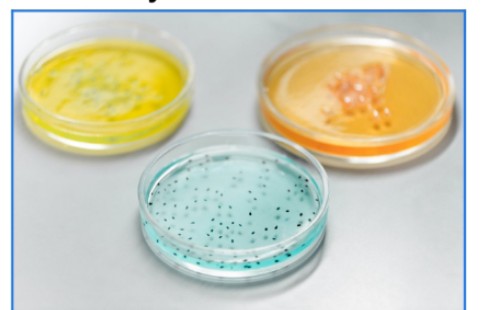Gene synthesis is the chemical synthesization of DNA strand base by base. It is a biological method of synthesis used to engineer artificial genes that have revolutionized biological research. Scientists are no longer limited to the classical process of manipulating one cell at a time.
Since its first successful application in 1972, technology has become popular in many research fields. The popularity of gene synthesis arises from the significant advantages it offers over traditional cloning methods. Some of them are:
- It doesn’t require a physical genetic code for amplification, unlike PCR and molecular cloning.
- It saves lots of time and money since there is no need to acquire a genetic copy of a gene.
- The sequencing cycle is short with gene synthesis but offers 100% accuracy.
- There is no need for repeatedly changing expressions of target genes, as gene synthesis concurrently changes all the target codons.
Read on to know where and how gene synthesis occurs.
What Can Be Synthesized
Customized DNA of these categories are the most often used synthesized sequences:
- Extracellular DNA
- RNA interference
- cDNA
- Genomic DNA
How Gene Synthesis is Performed
There are five basic steps of gene synthesis:
Sequence Optimization and Oligo Design
Sequence Optimization
After selecting a gene of interest, the next step is to design the sequence to synthesize. The process depends on the goal. If it is the maximization of heterologous protein expression levels, then Codon optimization is the best approach. But it would not be appropriate if the goal is to study the autogenous regulation of gene expression.
The same reading frame is maintained throughout the coding region when the construct contains multiple segments. Short flanking sequences are regularly added to ease recombination through restriction enzymes later. The sequence should not include other sequences that might interrupt the downstream workflow, like restriction enzyme recognition sites.
Researchers should be cautious of domains like RNase splice sites that are unintentionally introduced during the optimization of Codon as they may hinder in vivo assembly, expression, and maintenance.
Oligo Design
Sequence analysis is necessary to determine the best way for dividing the whole gene into fragments for synthesis and assembling. If the sequence has significant synthesis genes, they are split into 500-1000 kb chunks to synthesize separately and later assembled. There are various oligo design software that can help design the oligo, such as DNA works, Gen2 Oligo, GenDesign.
Gene synthesis uses oligos of lengths between 40-200 bp to avoid errors that accumulate with increased strand length. The oligo length will depend on the assembly method one uses, sequence complexity, and preferences of the researcher. Even though shorter oligos have low error rates, they are expensive because of the many overlaps that one requires. Adjust the oligos appropriately for equal melting temperatures and even lengths.
Factors to consider when selecting the oligo sequence are:
- Oligo length
- GC content
- Sequence repeats
- The tendency for hairpin formation
Oligo Synthesis
Oligo synthesis through phosphoramidite chemistry uses phosphoramidites to ensure the nucleotides assemble correctly and prevent undesired reactions of the strands during synthesis. The phosphoramidite groups have methylated phosphite and protective di-isopropylamine that contain unwanted branching. Phosphite reacts faster than phosphate hence why it is used.
An oligo can easily be synthesized in the laboratory with an automated synthesizer in a plate or column format. Or by hiring the services of commercial vendors. Oligos serve as both building blocks for assembling and primers to help in the assembly and PCR amplification of the gene products.
Gene Assembly
For correct assembling, a high infidelity enzyme is needed. There are so many successfully developed methods of assembling oligo. They are:
Polymerase based
- Dual asymmetric
- Overlap extension
- Two-step
- Polymerase cycling assembly
Ligase based
- Shotgun litigation
- Back based
- Two-step litigation
- Ligase chain reaction
Recombination based
- Biobrick assembly
- Transformation associated recommendation
- Sequence and ligation independent cloning
Sequence Verification and Error Correction
Image source: Unsplash.com
Verification of synthetic sequences is necessary because there is always a high risk of errors at each step of the procedure. Identify any sequence harboring mutations and remove or correct them. Clone the newly synthesized sequences into a plasmid vector to simplify the sequence verification process. The sequencing primers bind themselves to the vector regions, flank the inserted gene and ensure that its ends are correctly sequenced.
There are various quality control measures should there be a failure in obtaining and assembling the correct sequences from the pool of the synthesized DNA. Some of them are:
- Exhaustive purification
- Stringent hybridization
- Selection of correct coding sequences through functional assays
- Site-directed mutagenesis after sequencing
- Mismatched binding using prokaryotic endonucleases
Preparing Synthetic DNA for Downstream Applications
Appropriate vectors like plasmid vectors are needed for synthetic genes to be cloned into them in most applications. To facilitate this cloning, the gene sequence can be designed to include sequences like recombination arms, enzyme restriction sites, or other flanking sequences.
Conclusion
The replacement of traditional cloning methods with gene synthesis revolutionized researchers’ understanding of DNA function. It has introduced a new way of manipulating DNA for industrial, medical, and experimental purposes. Further advancements in error correction, automation, and cost-effectiveness will help widen the range of DNA research and other essential applications.


 Home
Home










